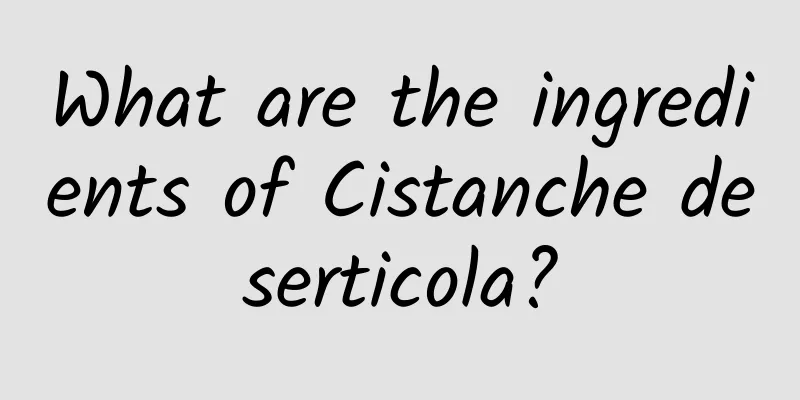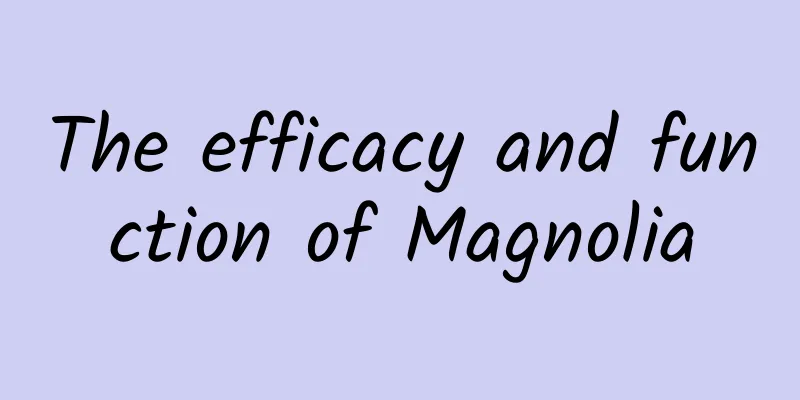What are the ingredients of Cistanche deserticola?

|
When you eat some important foods, you must analyze the specific ingredients carefully. So what are the main ingredients in the food? What are the ingredients of Cistanche? Everyone knows Cistanche, because Cistanche is a good health care medicine. When eating Cistanche, you should learn more about its basic knowledge. Here I will introduce to you the basic content of Cistanche ingredients. What are the main ingredients of Cistanche deserticola? Cistanche deserticola Ma (scientific name: Cistanche deserticola Ma), also known as Xinjiang Yun, Cun Yun, Cistanche, and Chagan Gaoya (Mongolian), is an endangered species. Tall herbs, 40-160 cm tall, mostly underground. The flowering period is from May to June, and the fruiting period is from June to August. It is mainly produced in Xinjiang and Alxa League of Inner Mongolia, and is also distributed in Gansu and Ningxia. Cistanche deserticola is a parasitic plant that lives on the roots of the desert tree Haloxylon ammodendron, absorbing nutrients and water from its host. It is known as the "desert ginseng" and has extremely high medicinal value. It is a traditional precious Chinese medicinal material. In history, Cistanche deserticola has been regarded as a precious tribute to the imperial court by the Western Regions. It is also one of the most frequently used tonic medicines in kidney-tonifying and yang-strengthening prescriptions throughout the ages. Every April, Cistanche and Cynomorium songaricum enter their peak growth period, which is also the peak period for illegal digging and mining by lawbreakers. Driven by economic interests, some lawbreakers even do not hesitate to obstruct law enforcement and come into direct conflict with law enforcement officers. The stem is unbranched or has 2-4 branches from the base, with a diameter of 5-10(-15) cm at the lower part, gradually becoming thinner upwards to 2-5 cm in diameter. The leaves are broadly ovate or triangular-ovate, 0.5-1.5 cm long and 1-2 cm wide, densely grown at the bottom of the stem and sparsely and narrowly grown at the top, lanceolate or narrowly lanceolate, 2-4 cm long and 0.5-1 cm wide, glabrous on both sides. Inflorescence spike-shaped, 15-50 cm long, 4-7 cm in diameter; the lower half or all of the bracts of the inflorescence are longer, equal to or slightly longer than the corolla, ovate-lanceolate, lanceolate or linear-lanceolate, together with the bracteoles and corolla lobes, sparsely pubescent or nearly glabrous on the outside and edges; there are 2 bracteoles, ovate-lanceolate or lanceolate, equal to or slightly longer than the calyx. The calyx is bell-shaped, 1-1.5 cm long, with 5 shallow lobes at the top, and the lobes are nearly round, 2.5-4 mm long and 3-5 mm wide. The corolla is tubular and bell-shaped, 3-4 cm long, with 5 lobes at the apex. The lobes are nearly semicircular, 4-6 mm long, 0.6-1 cm wide, and the edges are often slightly rolled outward. The color varies, from light yellowish white or lavender, and often turns brown after drying. There are 4 stamens, and the filaments are inserted 5-6 mm from the base of the tube, 1.5-2.5 cm long, with wrinkled and long soft hairs at the base. The anthers are long ovate, 3.5-4.5 mm long, densely covered with long soft hairs, and have a cusp at the base. The ovary is oval, about 1 cm long, with nectar glands at the base. The style is slightly longer than the stamens, glabrous, and the stigma is nearly spherical. The capsule is ovoid, 1.5-2.7 cm long and 1.3-1.4 cm in diameter, with a persistent style at the top and 2-petal dehiscence. The seeds are elliptical or nearly ovate, about 0.6-1 mm long, reticulate and shiny on the outside. The flowering period is from May to June, and the fruiting period is from June to August. What are the ingredients of Cistanche? The many ingredients introduced above are very important, and only by understanding these substances well can we correctly understand Cistanche. For the consumption method of Cistanche, we must pay attention to its basic knowledge. For example, we must learn more about some of the basic knowledge above, so that we can consume Cistanche correctly. |
<<: How to distinguish the authenticity of Cistanche deserticola?
>>: What are the edible effects of Cistanche deserticola?
Recommend
The efficacy and function of Aconitum
Aconitum carmichaelii is a common Chinese medicin...
Xiaomi: Xiaomi's omni-channel payment amount has exceeded 20 billion yuan in the 618 e-commerce promotion in 2024
According to recent news, during the annual 618 e...
These 5 most common household items are actually extremely dirty (the fourth one is used by everyone)
Everyone has different habits when it comes to cl...
The efficacy and function of Cardamine
There are so many medicinal herbs in the world, a...
The efficacy and function of realgar orchid
Do you know what realgar orchid is? If you know, ...
The efficacy and function of Ryoteng
Liangteng is a common Chinese medicine in clinica...
Life Encyclopedia丨Tips for quickly removing odors from the refrigerator, come and get them!
When you open the refrigerator, a pungent odor hi...
Remembering! The backbone of China
In the year 2021, which is about to pass, 27 acad...
What are the effects of Pao Panicula
Many people have never heard of Pao Panicula, so ...
They produce 20% of Earth's oxygen, but are disappearing
Most life on Earth depends on oxygen to survive. ...
If you don’t want your bones to become more and more brittle, you must eat less of these foods!
This article was reviewed by: Xie Xinhui, Jixi Ji...
The "decorations" you overlooked in costume dramas actually have a lot of knowledge!
Nowadays, a variety of film and television dramas...
What are the benefits of wild rose bee pollen
Wild rose is also a kind of rose. This kind of wi...
What are the effects and functions of Erzhi Pills?
Erzhi Pills are originally a medicine made from C...









